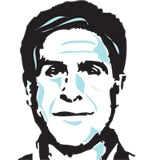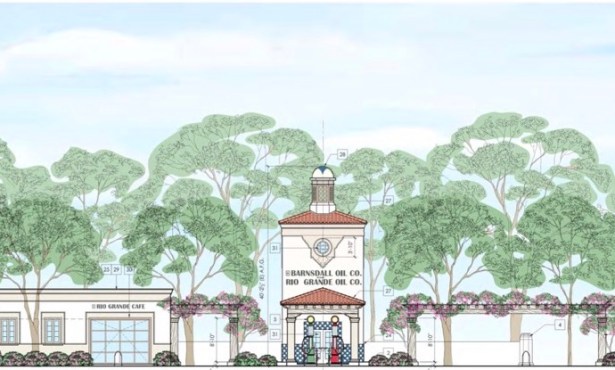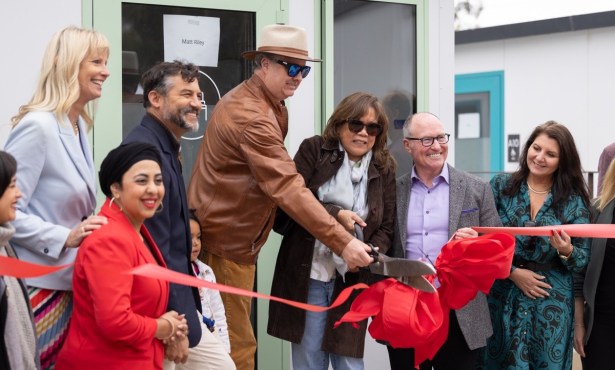Why Occupy Los Angeles Should Occupy Your Heart
What Would Thomas Jefferson Have Thought?
Although we do our best to conjure up ingenious and rational reasons for why our way of thinking is best, we are shaped by our culture much more than we like to admit. Thus, it comes to pass that human beings, left on their own, have a tendency to copy the characteristics of the environment in which they were raised.
If the Occupy Los Angeles founders had grown up in the same cultural environment I experienced as a young lad in Canada (I am a naturalized American), the entire camp would, no doubt, have been socially peaceful: a group of quietly boring people walking around with T-shirts announcing that “Compromise is our most important product.”
Americans, however, are cowboys. As such, we (remember, I am now American) celebrate a culture that prizes individualism, toughness, achievement, and the right to pursue happiness. Moreover, although increasingly more of us do not believe in a Creator, we do believe that, being Americans, we have the God-given right to say whatever we want whenever we feel like it. Such political self-esteem is a result of the United States being founded, literally, on the edge of a frontier, one that presented significant difficulties with the promise of unlimited opportunity.

The early American settlers found that, to survive, they had to develop the characteristics of successful frontiersmen. They had to be strong of mind and body; they had to be independent, healthy, daring, and ambitious, with a great deal of initiative. The conditions that required such traits made a lasting mark on the American psyche. Even today, with the original frontier long gone, these characteristics are still the ones Americans revere.
The early American colonies were dominated by two types of settlers: the adventurers, who were looking for something new and were not afraid to take a risk, and the desperate people with no other place else to go — the exiles, the orphans, the oppressed, and the criminals, including those who had been unfairly convicted. (The state of Georgia, for example, was originally a refuge for inmates who had been released from debtors prison.)
As odd as it may seem, it was these same two groups of people that I encountered during my visit to Occupy L.A. on October 24, 2011, the day on which the protest camp was celebrating its three-week anniversary.
As I look back on my visit, I find myself imagining what Thomas Jefferson might have thought if he could have been there with me. What would the great American statesman think about so many colorful tents pitched illegally on the grounds surrounding the City Hall, the seat of government for the City of Los Angeles? It is my belief that, had Jefferson walked around the camp, as I did, talking to the occupants and looking at what they had created, he would have found a recapitulation of early America, a delicately balanced social miracle created by groups of adventurers and desperados who, once again, had joined hands to build something out of nothing.
Moreover, had Jefferson visited Occupy L.A. on Day 21, he would have been impressed, as I was, by the overall organization. True, the makeshift occupation was illegal, the bastard child of incompatible parents, living on a diet of serendipity and uncertainly, but damn if it wasn’t civilized and orderly! Indeed, one of the first things I noticed was that, unlike the rest of the developed world, Occupy L.A. was populated by people who were not stressed out. Nowhere, for example, did I see anyone multitasking under pressure. In fact, on October 24, 2011, Occupy L.A. may have been one of the few urban areas in the civilized world where it would have been possible to find large numbers of people not glued to their smartphones. The inhabitants of Occupy L.A. were, in fact, talking — and listening — to one another.
To Jefferson, who had no experience with obsessive multitasking and addictive stimulation, I have no doubt that much of 21st-century mainstream culture would seem strange. And yet, had he walked around Occupy L.A., I am sure he would have understood what was happening. Within the large number of multicolored tents serving as temporary homes, Jefferson would have found people who were voluntarily putting themselves to considerable inconvenience in order to express their opinions and agitate for what they saw as their unalienable rights.
In addition to the residential areas, there were also a number of makeshift structures devoted to supplying services for the common good: a Welcome Tent, two First Aid Tents, a Media Center, a well-developed childcare area (the “Kid’s Village”), a Donations Tent, and a Social Services Tent.
As Jefferson looked at the Donations Tent, he probably would have been impressed by the white notice board upon which someone had written a financial summary for the first two weeks of the occupation: Deposits were $21,747.28. Expenses, broken down into 11 categories, were $7,509.90. Net proceeds were $14,237.38. Occupy L.A. might be a brand new organization, but it was clear that the occupiers believed in financial transparency.
Not far from the Donations Tent was a teaching area called the “People’s Collective University,” a place where free, one-hour classes were scheduled throughout the day. Next door was a library that offered over 350 free books, organized into 15 categories, as well as a large number of magazines. At the other side of the camp, there were tubs of donated blankets and clothing, free to anyone in need.
With respect to social organization, the Occupy L.A. volunteers had formed a variety of groups: a Security Crew, a Social Services Committee, a Media Team, an “Objectives and Demands” committee, and a Cleanup Crew. There was also a “Keep It Real Party,” whose goal was to encourage unity and solidarity by doing their best to keep people from becoming “too self-righteous, too egotistical, or too argumentative.”
I am sure Jefferson would have found all of this remarkable. However, what I suspect would have impressed him the most was how the people in the camp chose to provide a forum for deliberation.
In the very center of the south side was a large open area in front of a fountain, just below the wide, majestic steps leading up to the City Hall. Every night at 7:30 p.m., this area became a meeting place for the “General Assembly,” an entity common to most of the Occupy encampments around the world.
The idea of the General Assembly is simple: It is a place where the people as a whole come to talk, debate, propose resolutions, and vote. Anyone can talk as long as he or she wants, and everyone can vote. Although there is a “Facilitation Committee” to plan and coordinate the gatherings, the General Assembly generates a great deal of uncertainty and, as you would expect, disagreement. In fact, it is common for inconclusive debates to last far into the night.
As such, Thomas Jefferson would have been the first to admit that the General Assembly — as well as Occupy L.A. as a whole — was a long way from being an effective political and social force. Nevertheless, I think he would have been proud of how well a relatively small group of volunteers with a paucity of resources were able to create and sustain, on their own, nothing less than an incubator for pure democracy. And he would have been especially gratified to observe how well the principles he and his colleagues articulated so long ago had survived the long and problematic journey into the 21st century.
Had Jefferson been able to visit Occupy L.A. with me, he would have found a group of people, many of them young adults, whose dissatisfaction with the men and women in power had led them into a continuing conversation as to which values — right now — would best serve America and the world, a conversation in which everyone had a right to stand up and opine as to how the country should live, govern itself, protect its freedoms, and distribute its wealth.
No doubt, as Jefferson walked around observing the encampment and chatting with the occupants, he would have noticed a great deal that would have left him puzzled. Nevertheless, the one thing he would have recognized and appreciated was that the American spirit, forged so very long ago in the crucible of a hostile and dangerous frontier, was, over 250 years later, still alive and kicking ass.


